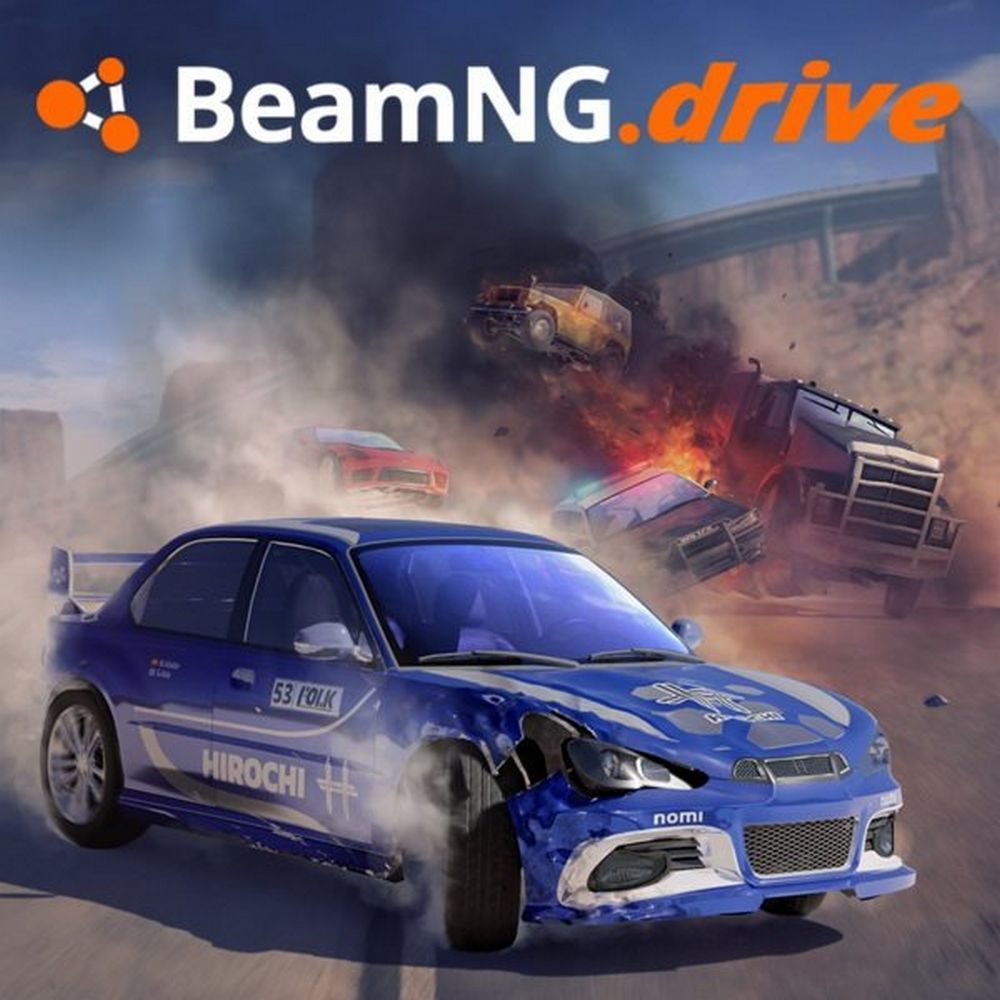
BeamNG.drive
All trademarks belong to their respective owners.Popular Now
 Warframe
Warframe
 Poppy Playtime
Poppy Playtime
 Sonic the Hedgehog™ Classic
Sonic the Hedgehog™ Classic
 Toca Boca World
Toca Boca World
 Auto X Drift Racing 3
Auto X Drift Racing 3
 Minecraft
Minecraft
 Fall Guys
Fall Guys
 League of Legends
League of Legends
 Fortnite
Fortnite
 EA SPORT FC 25
EA SPORT FC 25
The Art of Destruction: Why BeamNG.drive’s Damage Model Redefines Vehicle Simulation
In the realm of vehicle simulation, most games offer superficial damage—a dented fender here, a broken window there. But BeamNG.drive stands in a league of its own, transforming vehicle destruction into an intricate art form. Its groundbreaking soft-body physics engine delivers a damage model that is not merely visual; it’s a real-time, physically accurate representation of how materials bend, twist, and tear under stress. This unparalleled realism redefines what’s possible in vehicle simulation, turning every collision into a captivating, highly detailed study of force, friction, and the intricate dance of crumpling metal.
Beyond Visuals: The Soft-Body Revolution
The core of BeamNG.drive’s damage realism lies in its proprietary soft-body physics engine, which models vehicles as deformable structures rather than rigid objects with pre-defined animations.
- Beams and Nodes: Each vehicle in BeamNG.drive is constructed from a network of interconnected beams and nodes (vertices and edges of a mesh). These virtual components simulate the material properties of the car’s frame, body panels, and internal components. When a force is applied, these beams deform, stretch, compress, and ultimately break, mimicking real-world material behavior.
- Real-Time Calculation: Unlike pre-scripted animations or simplified collision models, BeamNG.drive calculates the deformation of these beams and nodes in real-time, millions of times per second. This means every collision, regardless of angle, speed, or point of impact, results in unique, dynamic, and physically accurate deformation, making no two crashes exactly alike.
- Component-Level Damage: The damage extends far beyond the surface. Engines can seize, transmissions can shatter, suspension components can snap, wheels can buckle, and tires can burst. Even small parts like door hinges or headlights are individually simulated. This granular level of detail means that a crash not only looks devastating but also has realistic mechanical consequences, directly affecting how the vehicle drives (or doesn’t drive).
- Realistic Weight and Inertia: The damage model is intrinsically linked to the vehicle’s simulated weight, mass, and inertia. A heavy truck hitting a light sedan will cause vastly different deformation patterns than the reverse, reflecting the true physics of momentum transfer during a collision.
The Beauty and Brutality of Deformation
The visual output of BeamNG.drive’s damage model is both mesmerizing and often shockingly realistic, transforming destruction into a kind of kinetic sculpture.
- Authentic Crumple Zones: Players can clearly observe how designed crumple zones deform to absorb impact energy, protecting the passenger cell. Comparing the deformation patterns of older, rigid vehicles to modern cars highlights the advancements in automotive safety engineering.
- Fractured Glass and Flying Debris: Glass shatters realistically, sending thousands of individual shards flying. Detached body panels, broken lights, and other debris scatter across the environment, adding to the visual chaos and realism of the impact. The way these elements react to secondary impacts or gravity is also fully simulated.
- Post-Crash Realism: Even after the initial impact, the deformation continues. Twisted metal might scrape against tires, dangling parts might drag on the ground, and severely damaged vehicles will handle with extreme difficulty, if at all. This persistence of damage reinforces the physical consequences of a crash.
- Environmental Interaction: The vehicles’ soft bodies also interact realistically with the environment. A car dragging its twisted fender along a guardrail will leave scratches and deform further, while driving through deep mud or snow will see the vehicle’s body flex and react to the terrain.
Beyond Entertainment: Technical Prowess and Future Implications
BeamNG.drive’s damage model is not just a gaming novelty; it represents a significant leap in real-time simulation technology.
- Pioneering Technology: When BeamNG.drive first emerged, its soft-body physics engine was revolutionary for real-time applications. It pushed the boundaries of what was computationally feasible for detailed physical simulation in a consumer product.
- Potential for Real-World Applications: The underlying technology has significant potential beyond gaming, including applications in automotive safety testing, virtual prototyping for vehicle design, forensic accident reconstruction, and even educational tools for engineers.
- Setting a New Standard: BeamNG.drive has set an incredibly high bar for vehicle damage simulation in games. Any title aspiring to true realism in crashes now faces the challenge of measuring up to BeamNG’s unprecedented fidelity, influencing future game development across the industry.
The art of destruction in BeamNG.drive is a captivating fusion of brutal realism and intricate physics. By meticulously simulating every beam and node of a vehicle, it has redefined what a damage model can be, turning every collision into a unique, dynamic, and profoundly detailed spectacle that continues to awe and educate its players.
What’s the most surprisingly realistic damage detail you’ve noticed in BeamNG.drive?
Rating
PROS
- Free to play
- Open-world environment
- Realistic crashes
- Realistic suspension
- Variety of terrain types
- Open world
CONS
- No multiplayer
- The game requires a powerful computer to run
- The game is not fully optimized
- The game does not have any in-game tutorials